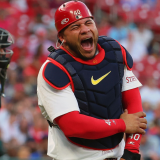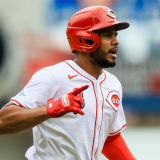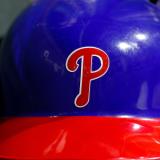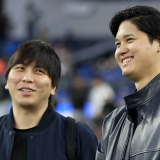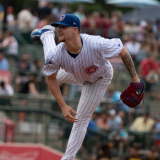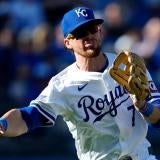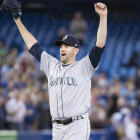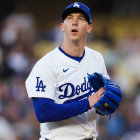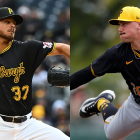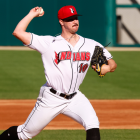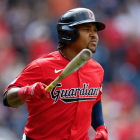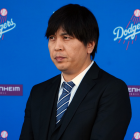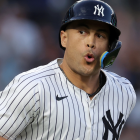Tuesday night, Seattle Mariners left-hander James Paxton threw the sixth no-hitter in franchise history and the third no-hitter in baseball already this season. There was only one no-hitter last year. The 2018 season is six weeks old and already there have been three no-hitters. Huh.
After Paxton no-hit the Toronto Blue Jays, Washington Nationals right-hander Jeremy Hellickson flirted with a perfect game against the San Diego Padres -- the Padres have already been on the wrong end of one no-hitter this year -- before it was broken up in the seventh inning. A no-hitter and a perfect game on the same day would've been something else.
Saying it feels like a daily occurrence that someone gets through six innings without allowing a hit would only be a slight exaggeration this season. It's been happening fairly regularly.
From @SlangsOnSports: After James Paxton's no-hitter last night, fhe Nationals' Jeremy Hellickson generated the 20th no-hit bid of at least six innings this season. There were 24 all of last season.
— Buster Olney (@Buster_ESPN) May 9, 2018
I suppose it should not be a surprise there have been so many no-hit bids early this season. Non-pitchers have a mere .248 batting average this year, which is the lowest in baseball since the league hit .245 in 1968, the year before the mound was lowered. I suspect the league batting average will increase in the summer months, but right now, getting a hit is really hard.
There are a few reasons for this, of course. Strikeouts continue to increase -- hitters are striking out in 22.7 percent of their plate appearances this season, which would set a new all-time record for the 12th time in the last 13 seasons -- and infield shifts are widespread. Heck, there are outfield shifts nowadays too.
.@astros positioning vs Gallo. Wow. pic.twitter.com/XCOy0VfKeL
— Daren Willman (@darenw) March 29, 2018
Makes sense, right? Put defenders where the hitter is most likely to hit the ball. I'm surprised it took baseball this long to catch on. The shift takes away hits. That's what it does.
The league is hitting .294 when a ball is put in play this season. That is down from .300 the last two years though, historically, it's not unusual. The league batting average on balls in play has been sitting in the .290-.300 range for a few decades now. It's in the lower end of that range in 2018, but again, once the weather warms up, I think we'll see an uptick.
So, if balls in play are falling for hits at what can be considered a normal rate, why is the league batting average so low? Because fewer balls are being put in play, that's why. So far this season only 67.4 percent of all plate appearances end with a ball being put in play. That is an all-time low.
Here, to really drive home the point, is the percentage of plate appearances that end with a ball in play over the last 100 years:
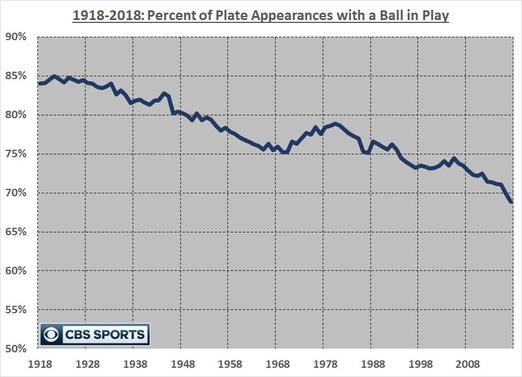
You can see the spike in balls in play after the mound was lowered in 1968 -- that was the entire point of lowing the moundl! -- but, generally speaking, it's been a gradually trend downward over the last century. The last few seasons have been especially drastic. We've gone from 72.2 percent in 2010 to 67.4 percent in 2018. Nearly a five percentage point drop in less than a decade.
Is the decline in balls in play leading to the early season spike in no-hitters, or just the fact that there seems to be a serious no-hit bid every other day? Yeah, it is, to some degree. Likely a small degree, yes, but it is absolutely a factor. Fewer balls in play means fewer chances for a base hit. It's quite simple.
Going nine innings without a hit is an anomaly -- a tremendous accomplishment for the pitcher, for sure, but it is an anomaly, and that's what's what makes it fun -- and it is possible, if not extremely likely, that we will go the entire season without another no-hitter. MLB has gone two-plus years between no-hitters on multiple occasions and it could happen again, for sure.
No-hitters may be an anomaly, but I do think all these no-hit bids we've seen this season -- those games where the pitcher doesn't allow his first hit until the seventh or eighth inning -- are a symptom of larger problems.
- There are a lot of strikeouts in baseball now and fewer balls being put in play.
- Many teams are rebuilding and thus running weak lineups out there on an everyday basis.
The Padres are in the middle of a deep rebuild and they currently have baseball's highest strikeout rate (27.2 percent) and third lowest batting average (.226). I reckon Hellickson's perfect game bid Tuesday night won't be the last time San Diego is on no-hit watch this year, and hey, maybe last week's no-hitter won't be the last time they get no-hit. Fewer balls in play and bad teams are a great combination for no-hit bids.
No-hitters are a lot of fun, and in this age where pitchers are kept on strict pitch limits and bullpens are so involved, individual no-hitters like Paxton's or Sean Manaea's are really cool. Who doesn't like to see history? No-hitters don't happen all the time, however. The fact remains that there are fewer balls in play and less action on the field than ever before right now, and in the age of short attention spans, that lack of activity can be bad for baseball.







